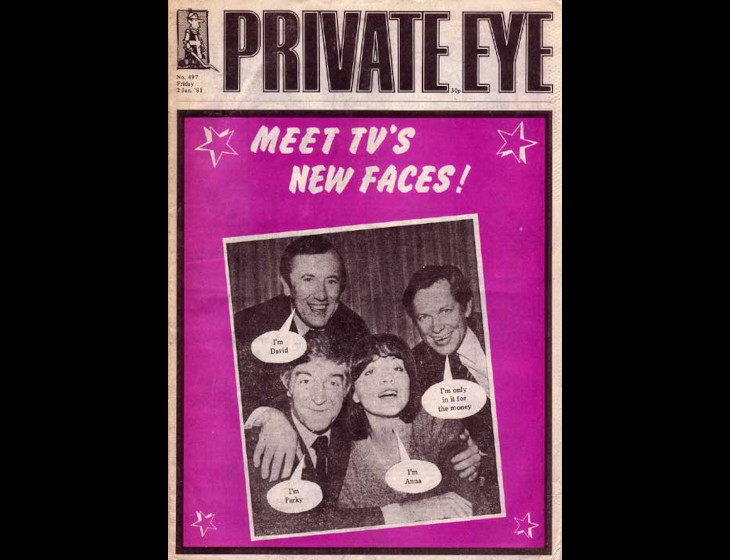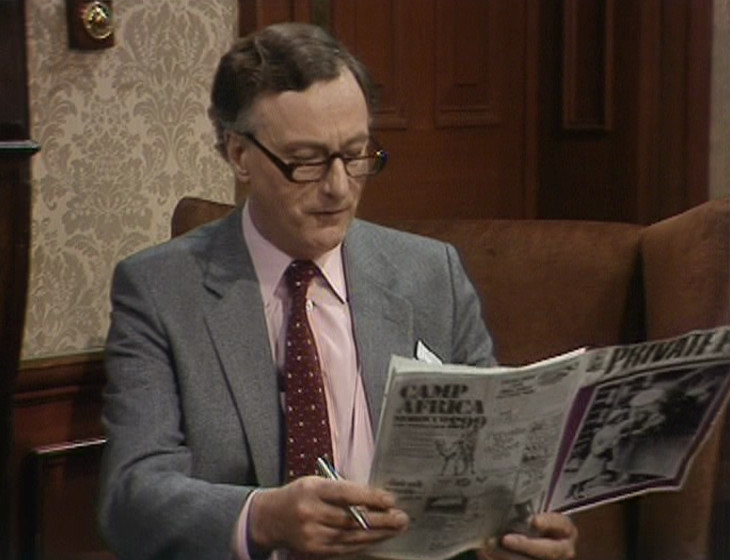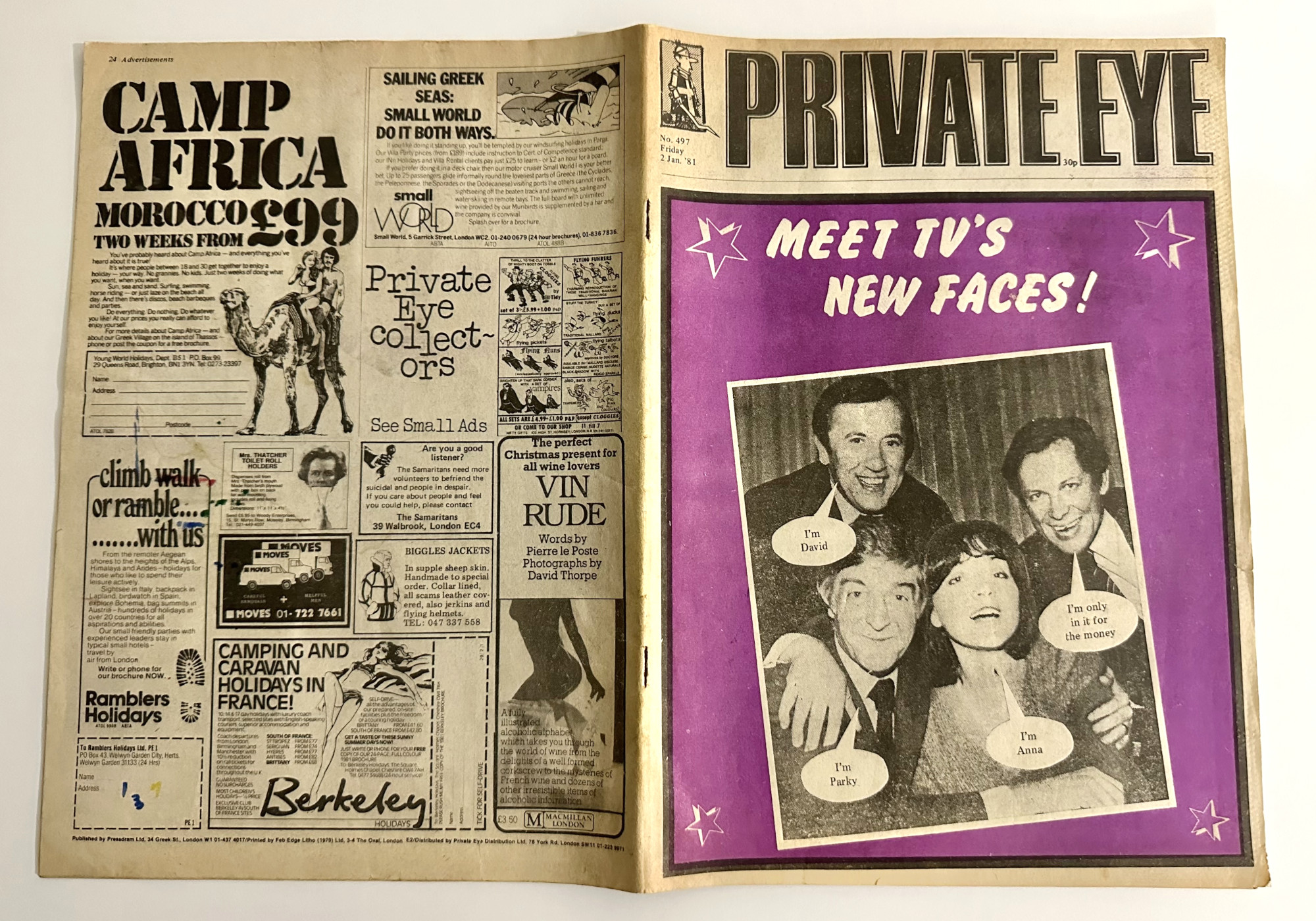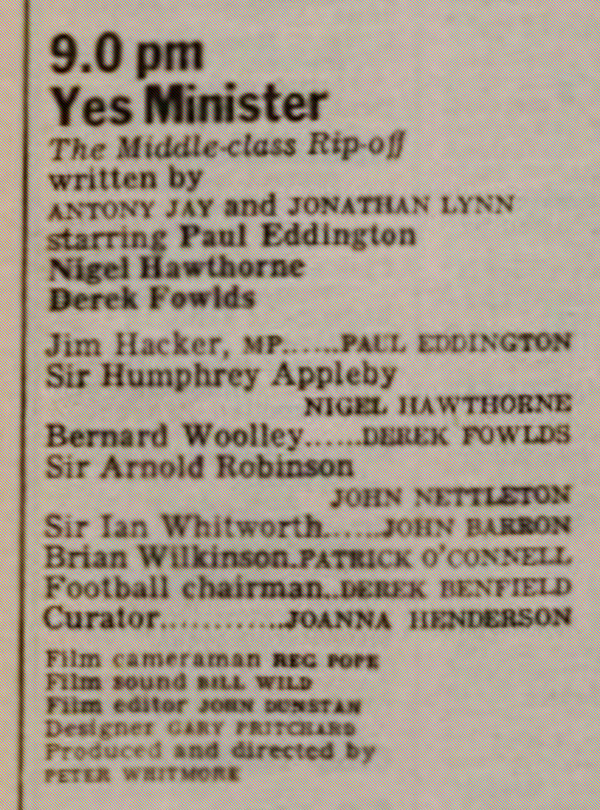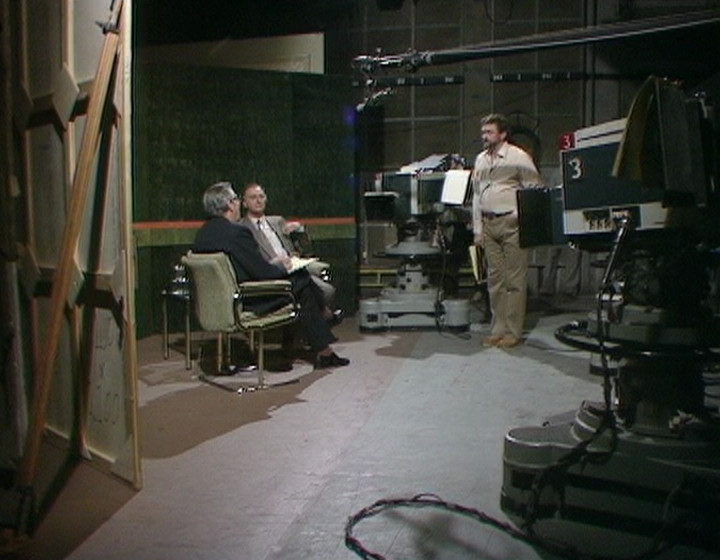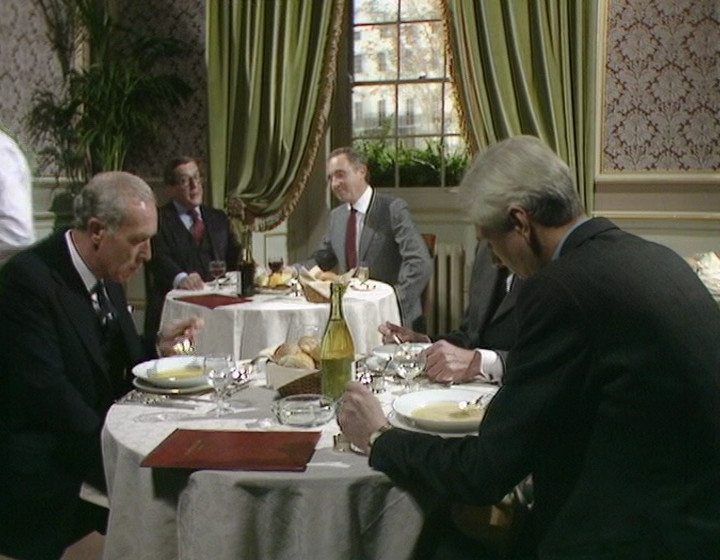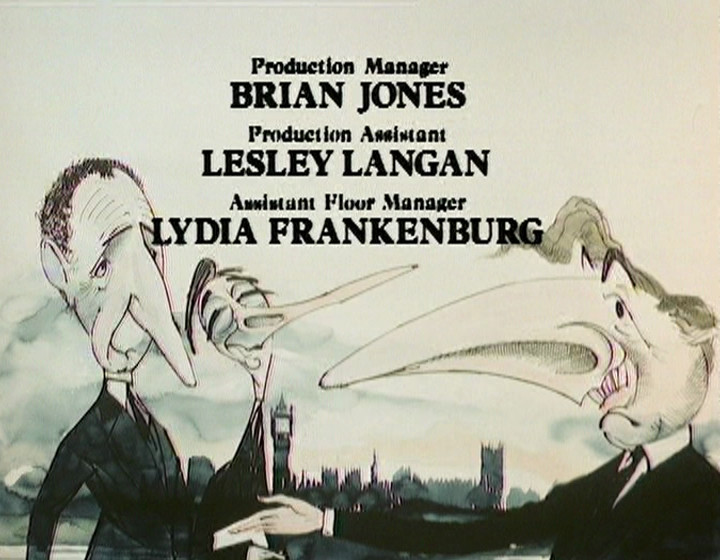One of the most frustrating things about writing my series on flash-frames in The Young Ones and Spitting Image has been how absurdly difficult the research has been. There really is a ludicrous amount of misinformation out there. I already wrote a little about this at the start of the year, but I have more examples. Oh, so many more examples.
Take Peter Seddon’s Law’s Strangest Cases (Portico, 2016), which is one of the very few books to discuss the Norris McWhirter Spitting Image flash. To the point where it has been used as a main source in reporting elsewhere online. Quite understandably – this is a proper, published book, it really shouldn’t be getting major things wrong.
Sadly, we immediately run into problems:
“It all started with the television broadcast of a 1984 episode of Spitting Image, the series whose lampoonery through the medium of cruelly parodic puppetry has caused many a celebrity to fume.
The good news for Norris was that he wasn’t on it. Or was he? For thereby hangs the tale.”
I mean, he certainly wasn’t in a 1984 episode of Spitting Image. That was the famed “scriptwriters are incredibly good in bed” flash, not the Norris McWhirter head-on-topless-body flash, which happened in 1985.
But let’s not get grumpy about an incorrect date. That’s arsehole territory. The bulk of the reporting must surely be correct.
“The Times subsequently reported that Mr McWhirter, aged 59, had taken out an action for libel against the Independent Broadcasting Authority at Horseferry Road Magistrates’ Court. McWhirter was adamant that he had seen ‘a grotesque and ridiculing image of my face superimposed on the top of a body of a naked woman’. It really doesn’t bear thinking about.”
Norris McWhirter didn’t take any action for libel whatsoever. His case was solely concerned with subliminal messaging; libel was never part of his accusations.
Now true, the book does then go on to say the following:
“He asserted that the broadcasting of the image was a criminal offence under the Broadcasting Act 1981, but not because of ‘what’ it was – it was how long it lasted that was the real bone of contention.
‘And how long did it last?’ asked the judge with due concern. Norris McWhirter’s reply was brief but not nearly as brief as the offending image: ‘A quarter of a second,’ was his stunning reply.
McWhirter’s contention was that the image had been broadcast subliminally, using the sort of technique that unscrupulous advertisers or political regimes are said to employ to implant subconscious images and messages into the addled brains of the world’s couch potatoes.”
So the book does understand at least part of the case. But if you’re going to entirely misreport it as a libel action, you’ve pretty much fallen at the first hurdle.



